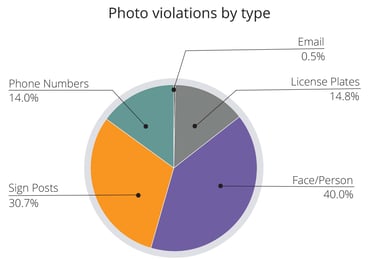By Nathan Brannen on 27 June 2019
Let's start with something that may be taken for granted - The Multiple Listing Services (MLS's) in the United States do an incredible job maintaining clean and standardized listing data.
Over the past 6 months, we have spent a great effort understanding what compliance means to different MLS's, their compliance teams and even their members. Based on 100+ hours of conversations and feedback, below are 4 key takeaways we've had.
1. It's not easy
Most people reading this have dealt with spam or grossly misrepresented listings within other types of marketplaces. It makes it harder to find what you're looking for, or even worse, results in a regrettable purchase.

Now, imagine how frustrating that would be if it occurred during your most important purchase, a home.
Fortunately, the MLS's system of review and self-moderation has prevented this and created a better environment for all. A moderation team is in charge of creating and enforcing guidelines for what constitutes a valid listing.
Easy enough, right? Let's take a look at an example. CRMLS's rules and regulations state that images of people, animals, or other items not directly related to a listing are not allowed.
Now take a look at the three images below and identify whether they should be flagged.
1. A beautiful neighborhood swimming pool
.jpg?width=459&name=fun-hotel-palm-trees-261108%20(1).jpg)
Sure, there is a person in the photo, but it's summer and expecting an agent to take a photo without people in the photo is unreasonable... right? Plus, you can't even see their face.
2. A lovely backyard view
.jpg?width=460&name=backyard-378630_1280%20(1).jpg)
Looks like Spot ran into the frame on this photo. Is this what they meant when they said animals aren't allowed?
3. A homey dining room
.jpg?width=461&name=ceiling-chairs-contemporary-1884261%20(1).jpg)
This dining room looks perfect for a small family. Do photos of people in images count?
So, which are the true violations?
Not so easy.
The truth is that many compliance teams can easily recognize a violation when they see it, but there is often still a judgement call required. Unfortunately, due to the sheer number of images, most MLS's compliance teams can't manually review every photo. There is not enough time and there are other more valuable things that those teams need to be focused on.
As a result, many MLS's rely on their members to report any violations they see on other agent's listings.
2. It's important
Now, you have to think about what the incentives are for an agent.
First and foremost, they are most interested in spending their time working with their clients. They make their living by closing deals. While they likely see the benefit in having clean and consistent listing photos, the vast majority don't identify themselves as the enforcer. For better or worse, most people don't feel comfortable being tattle tales.
Even most MLS's don't want to be seen as the bad guy. They want to serve their goal of providing the highest quality of listings, but don't want to be nagging their agents all of the time.
Many use fines as deterrents, but this is typically only a last resort. Some of the MLS's told us they give out fines on less than 2% of the violations they find. As the bulk of their revenue comes from member dues, they don't want to create a hostile environment.
On the other hand, certain agents may realize that photo violations may not be strictly and promptly enforced. They understand the benefit that a certain brand's for-sale sign can have on the attractiveness of a listing. For some, it may be tempting to upload non-obvious violations, knowing that they are unlikely to be reported. Plus, even if they're caught, they'll still be given up to 72 hours to update the photo.
This is obviously unfair for all the agents playing by the rules. The main goal should be to create a consistent and level playing field for all your members.
3. There's room for improvement
So given these challenges, are photo violations really that big of a problem for most MLS's?
Many MLS's are unsure how to answer this. Some are skeptical it is a big issue, while others admit that they don't really know.
Let's take a look at the numbers we have.
At the most recent RESO conference, they estimated that between 1/3 and 50% of all violations are related to images. This aligns well with the estimates we have received from the MLS's we're working with stating ~40% of their violations come from photos.
According to our analysis, 4-6% of live listings still contain a photo violation. The most common violations are people/faces and the agent branding/signage.

While most of the egregious violations are certainly being caught, it is clear that there are still a large amount of violations slipping through the cracks. In particular, many people and sign posts are making their way into listings.
4. AI can help
We certainly don't mean to downplay the great work MLS's have done to create the world's highest quality of listings, but we also think that technology has provided a path to improve even more. Using an A.I.-powered photo compliance tool to enhance your current compliance process will:
1. Ease the burden on your compliance team
2. Result in more consistent enforcement of rules
3. Ensure that 100% of photos are promptly reviewed
4. Create a better environment for your members.
Unsure of whether these issues apply to your MLS? Reach out to us to see how these issues may be impacting your listings.

.jpg)

comments